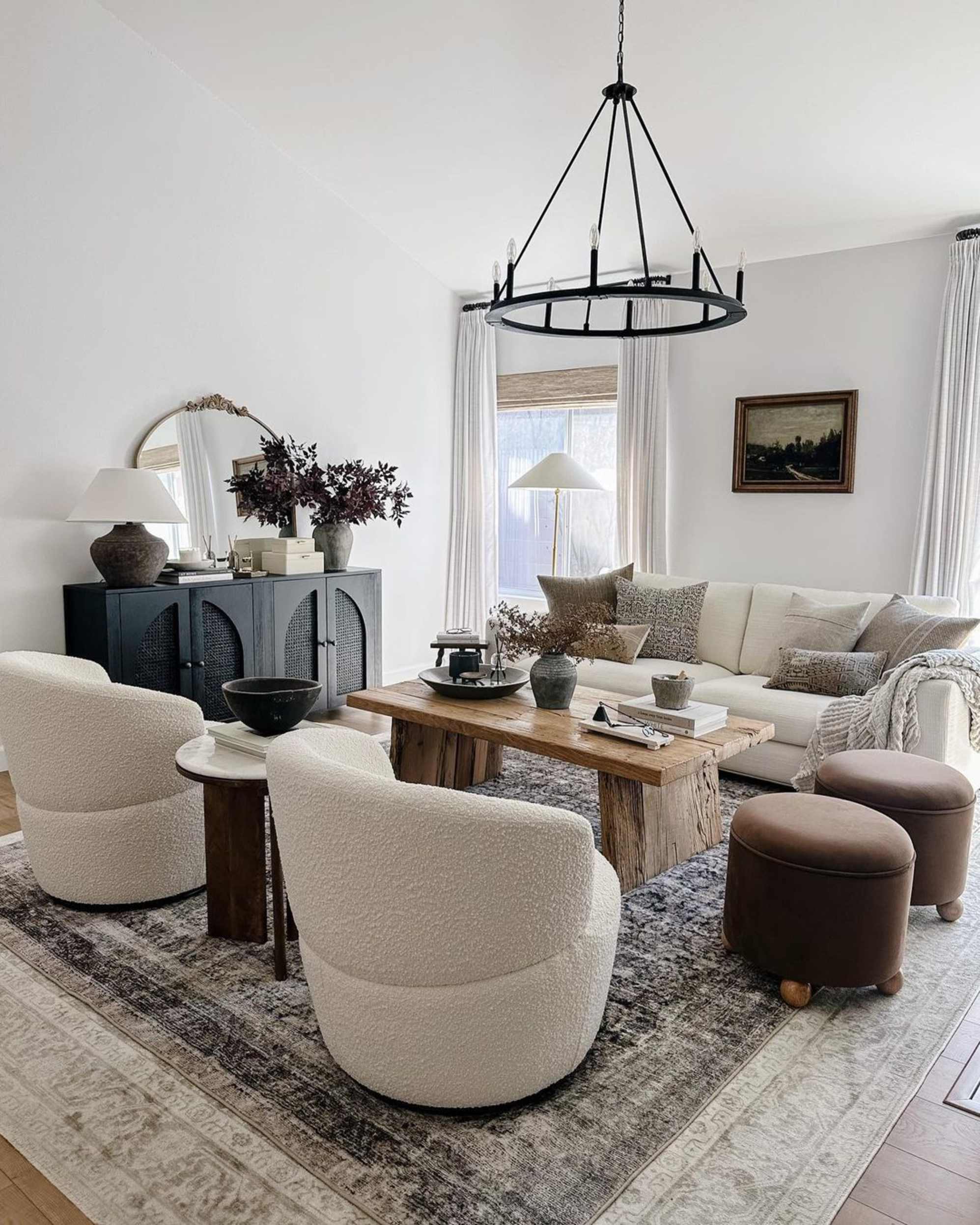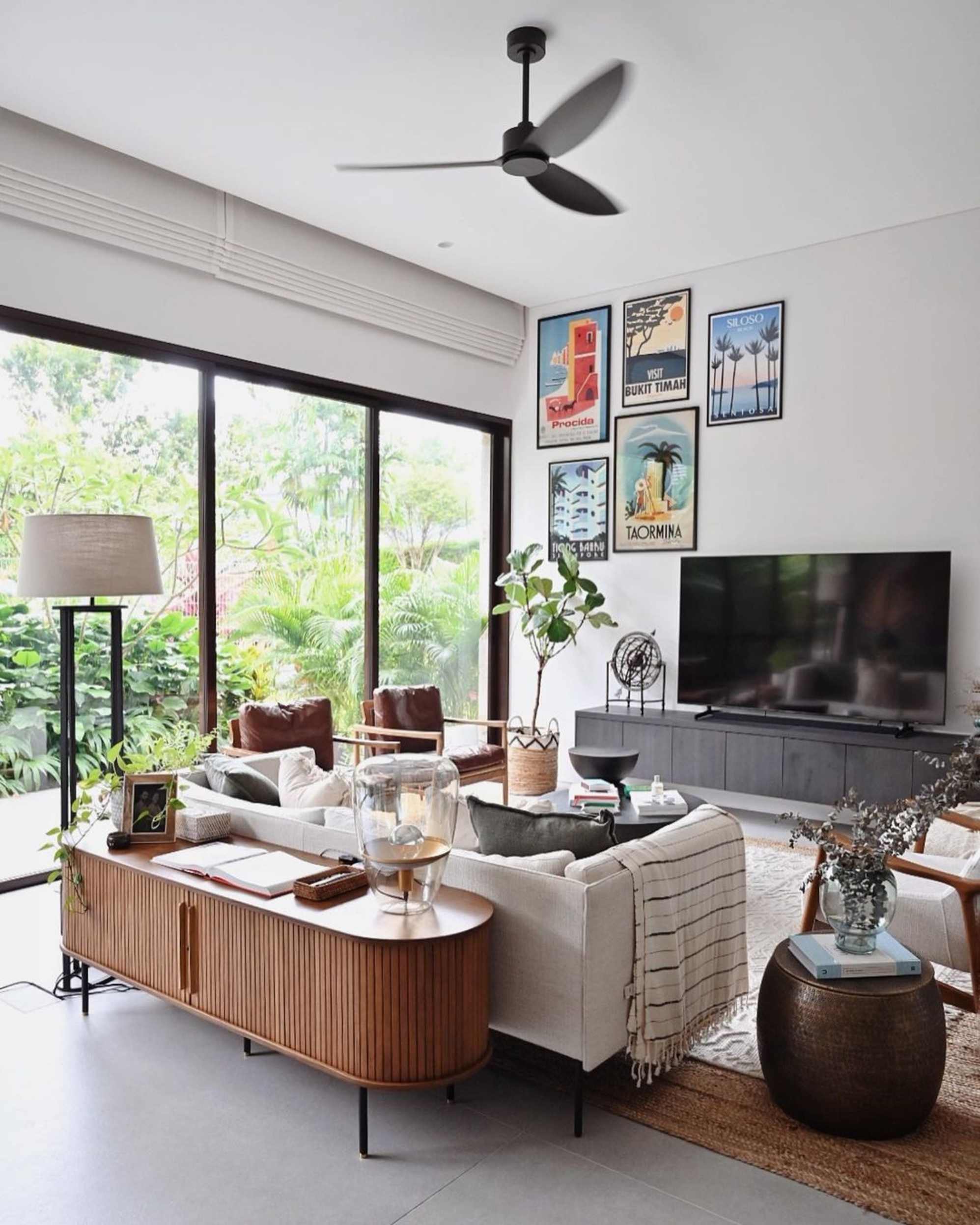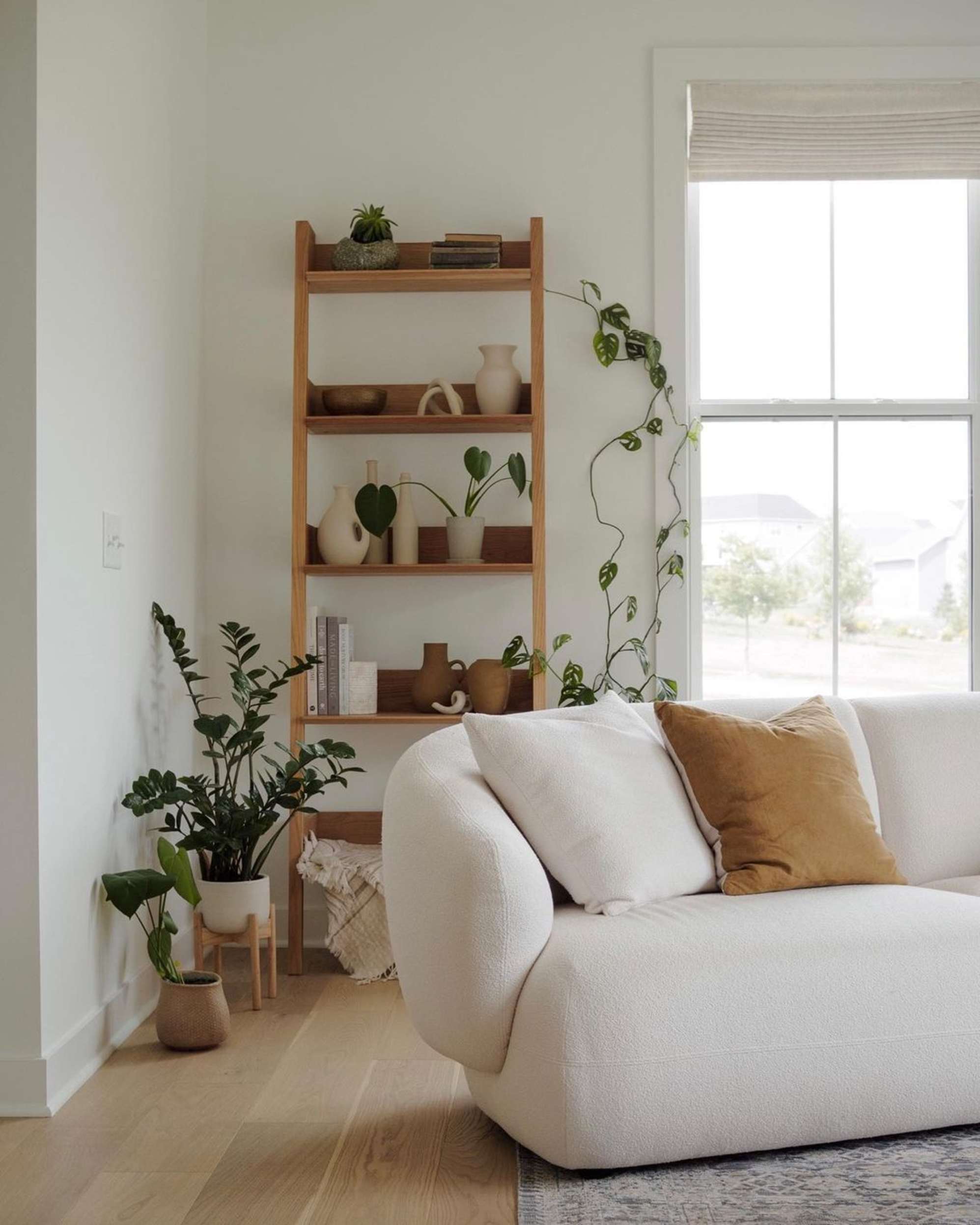
How to Break Up and Style Large Living Rooms
Large living rooms are a dream for many, but the reality can be a challenge. Sometimes, their expansive nature can lead to a feeling of emptiness or a lack of functionality.
In this guide, we'll delve into tips on how to split the space, creating conversation nooks, reading retreats, and stylish havens that maximize aesthetic appeal and usability.
5 ways to split and style a big living room
Group furniture together with a purpose
The key to effectively utilizing a large living room lies in dividing it into distinct zones by grouping furniture together.
You could then divide the space into a few separate areas - the first group could consist of a sofa and two armchairs around a TV or fireplace that serves as the main conversation area for family and friends. Use a console table placed behind a sofa to subtly separate this area from other zones.
The secondary area can consist of a chaise lounge or a reading chair and a small side table for quiet moments by yourself.
You could even have a dedicated play area for your children - with plush rugs, toys, and a dresser or storage bins to store items.
The Dawson 3-seater Sofa
Picture credits: @myhousefromscratch
The Dawson 3-seater Sofa
Picture credits: @myhousefromscratch

The Paloma Bouclé Armchair
Picture credits: @emm_interiors
The Paloma Bouclé Armchair
Picture credits: @emm_interiors

When it comes to furniture grouping, rugs are key to help visually designate one zone from the other. Use at least one rug when it comes to furniture grouping to anchor the furniture and maintain a clear separation.
This segmentation fosters a sense of intimacy within the expansive room while catering to diverse activities that work for your lifestyle.
Intentional furniture placement can work magic
If you want to put emphasis on the expansiveness of your living room but want to prevent it from looking empty, ditch the perimeter and pull furniture inwards.
Imagine the room as a conversation pit, where everyone can face each other comfortably and indulge in conversation. This configuration invites conversation and fosters a sense of connection in your vast living room.
Start with your main seating area, such as a large sofa or an L-shape sectional that provides ample room for guests. Instead of pushing it flat against the wall, position it to face the center of the room.
Angle armchairs, loveseats, or ottomans towards the sofa to create a sense of intimacy and conversation. Anchor this central hub with a spacious coffee table that’s large enough to accommodate drinks, books, and decorative objects.

The Harper Sideboard
Picture credits: @edwardleefilms
The Harper Sideboard
Picture credits: @edwardleefilms

Incorporate room dividers
A fuss-free way to split up your large living room is to use dividers. This can be in the form of bookcases, shelves, or decorative partitions. These elements not only serve a functional purpose but also add to the visual appeal of a large living room, breaking up the expanse of space and adding dimension.
Opt for open-back bookshelves or translucent screens to maintain a sense of airiness while effectively segmenting the space. You can even make use of your sofa to act as a divider between zones.

The Marlow Performance Bouclé Armless Sofa
Picture credits: @thextonsmith.interiors
The Marlow Performance Bouclé Armless Sofa
Picture credits: @thextonsmith.interiors

Use tall plants or hanging planters
If your large living room also has tall ceilings, using tall plants or hanging planters to divide the space is an excellent strategy that visually segments the room without creating physical barriers.
As the scale of the space can sometimes feel overwhelming, incorporating plants brings a sense of warmth and intimacy. They soften hard lines and create a more inviting atmosphere conducive to relaxation and socializing.
Place tall or large potted plants like a fiddle leaf fig or birds of paradise beside your sofa or in empty spaces to visually segment the area. Planters like ferns or cascading vines that suspend from the ceiling can also bring the ceiling down, making the room appear shorter without feeling small.
The Auburn Performance Fabric Sectional Sofa
Picture credits: @homebyheena
The Auburn Performance Fabric Sectional Sofa
Picture credits: @homebyheena

The Marlow Performance Bouclé Curve Sofa
Picture credits: @evaacatherine
The Marlow Performance Bouclé Curve Sofa
Picture credits: @evaacatherine

Create separation with accent walls
If you’re not keen on rearranging your living room furniture, another great way to break up your large living room is to have accent walls. For rental spaces, consider using wallpaper for an easy-clean and budget-friendly option!
Select different paint colors, wallpapers, or tiles for various walls to create distinct zones and define separate areas for different activities.
The Marlow Performance Bouclé L-Shape Sectional Sofa
Picture credits: @lonefoxhome
The Marlow Performance Bouclé L-Shape Sectional Sofa
Picture credits: @lonefoxhome

The Jonathan Leather Sofa
Picture credits: @duvaldesignllc
The Jonathan Leather Sofa
Picture credits: @duvaldesignllc

Warm, rich tones like deep blues or earthy greens can create a cozy atmosphere in a reading nook or entertainment area, while lighter shades like soft neutrals or pastels can brighten and open up the main seating area or joint dining space.
You could also break up the visual monotony of a large living room by painting or wallpapering one wall in a bold color or eye-catching pattern. This instantly draws attention to a specific area or feature within the room.
Transforming a large living room from a vast expanse into a harmonious, inviting space requires careful planning and creative vision. By implementing these strategies, you can unlock the full potential of your big living area and create a space that feels cozy.

